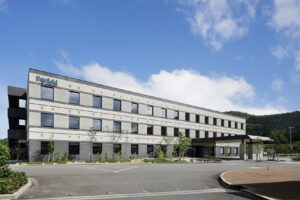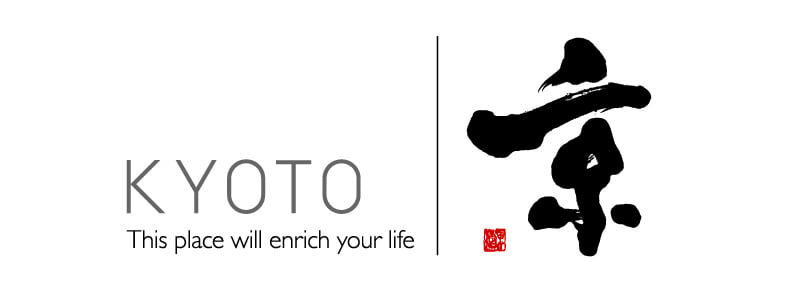Term archive

投稿タイプ:restaurants
Yanagimachi
Yanagimachi is a famous restaurant in Fukuchiyama that showcases Fukuchiyama’s specialties of duck and green onion in a dish known as kamosuki (sukiyaki made with duck meat). The restaurant building is a restored Meiji era (1868-1912) machiya (traditional wooden house, typical of Kyoto) opened in 2015. The dishes showcase local and seasonal produce, and the green onion used in the kamosuki is Fukuchiyama’s own kujo onion (a famous vegetable of the Kyoto region). For lunch, you can enjoy wonderful oyakodon (rice topped with chicken and egg) or kara-age (fried chicken) set meal options, both made using the local Fukuchiyama chicken, and accompanied with seasonal local vegetables. There’s also a select range of alcohol, coffee, and books to enjoy at the café and bar, making it a perfect spot for any occasion.

投稿タイプ:restaurants
Un.donpuri Dessert Shop
Located in Fukuchiyama City, Un.donpuri is a café known for its for puddings that look amazingly like Japanese cuisine. It has puddings in the form of 11 kinds of dishes: katsudon (fried pork cutlet on rice), ramen, seafood bowls, tororodon (grated yam rice bowl), mapo tofu (Sichuan-style bean curd with ground pork spicy taste), Japanese hot pot, beef bowl, loco moco, cold sweet red bean soup, wonton noodles, and Chinese style cold noodles (summer only), each sold for 600 yen including tax. They are not only delicious to taste, but also enjoyable to look at. The idea began when the pastry chef created a pudding that looked like katsudon as a gift for a friend, which later went viral on social media. In addition to the puddings, cakes and baked sweets like cute donuts and cookies for takeout are lined up in the showcase window (there is also an eat-in space within). The pudding containers are made of polypropylene, which is microwavable and can be taken home to use for other purposes. The café is now a famous attraction in Fukuchiyama for sweets-lovers, and while the cafe opens at 11 a.m., the 80 bowls of pudding prepared on weekdays and 120 on weekends are often sold out early.

投稿タイプ:restaurants
Pâtisserie Mountain × CELLAR DE CHOCOLAT by Naomi Mizuno
A classical European-style mansion situated in a quiet, residential part of Fukuchiyama City, looking like a confectionery kindom on the outskirts of Paris. This is a chocolate store run by Chef Mizuno, who won the 2007 World Chocolate Masters, a championship for the world's greatest chocolate-makers. The large store has terrace seating, and the first floor has a corner with a showcase of cakes and baked goods, as well as a cave-like space surrounded by antique furniture. There is a sales corner for chocolate bonbons and macarons, and chocolates displayed like jewelry. The second floor is a café where all in-store products can be eaten. The prize-winning "Apricot and Salt" chocolate, as well as the different shades of macaron, are delightful goods to bring home.

投稿タイプ:restaurants
Adachi Otoemon
Tamba chestnuts are a traditional product in Kyoto Prefecture whose history is as long as other well-known Kyoto traditional vegetables. Tamba chestnuts are from the Tamba region, which includes Kameoka, the Funai region, Ayabe, and Fukuchiyama. It’s said that in the old days of the Edo period (1603-1868), Tamba chestnuts were used as offerings, when the chestnuts were also accepted in place of the annual rice tax. Using these Tamba chestnuts, Adachi Otoemon crafts specialty dessert terrines and pound cakes here in Fukuchiyama City. Cross sections of the desserts reveal large, whole chestnuts, which are combined with the wasanbon Japanese refined sugar from the Sanuki region and flavourful cultured butter to create an exquisite product. You can really enjoy the chestnuts as they make up more than two thirds of the weight of this luxurious dessert. Additionally, the shop building was previously the residence of the Matsumura family, built during the Taisho (1912-1926) and Meji era (1868-1912) and is designated as one of Kyoto Prefecture’s Tangible Cultural Properties. Other than the chestnut terrines and chestnut pound cakes, there are also other baked goods, cream puffs, and gelato available.

投稿タイプ:restaurants
Yakuzen Café Yu-Yu
Yakuzen (medicinal Chinese cooking) Café Yu-Yu is located next to the Akao Chinese Medicine Pharmacy, which is built in a rennovated, 120 year-old machiya home. According to its concept of medicine and food being one, the café uses herbs used in Chinese medicine to create lotus-wrapped steamed rice and medicinal teas to suit your mood and physical condition.

投稿タイプ:restaurants
Yuzuki
At Yuzuki, guests can enjoy seasonal kaiseki course meals, hot pot dishes, summer-only beer gardens, and other meals made with seasonal Kyoto ingredients.
The large garden reflects the changing faces of the season—from cherry blossoms, to deep green, to colored leaves, to white snow—and the elegant dining room offers an out-of-the-ordinary experience for guests, with flowers arranged by the chef himself, "as if they were in the field."
Available drinks include draft beer, Japanese sake, shochu, cocktails, non-alcoholic beverages, and authentic coffee.

投稿タイプ:restaurants
Chatsubo Yoshida
At Chatsubo Yoshida, you can enjoy both matcha and a meal, either by having matcha hand-whisked for you by your seat, or by whisking your own matcha.
The store, which used to be a tea and tea utensil shop, has been renovated and remade as a café where you can casually enjoy matcha and some conversation.
Enjoy authentic matcha tea without worrying about difficult preparation methods.

投稿タイプ:stay
Fairfield by Marriott Kyoto Kyotamba
The Fairfield by Marriott Kyoto Kyotamba is located just next to the Tamba-Ajimu-no-Sato Road Station at the entrance to the town o Kyotamba. Surrounded by gently sloping mounains, Kyotamba's unique climate and highland terrain makes it possible to produce a treasure trove of local specialities, like Tamba chesnuts and black beans, as well as a variety of delicious seasonal dishes, like sweetfish cuisine, wild boar hot pot, and edible wild plants. This hotel offers the kind of warm and welcoming environment that makes it the perfect base for your travels through the Japanese countryside. We wish you a relaxing stay.

投稿タイプ:stay
Shoreki-ji Temple
The Shoreki-ji Temple, constructed in 942, is situated in Ayabe City next to the Yura-gawa River. The temple enshrines a statue of the bodhisattva Kannon carved by the temple’s founder, Kuya, a famous priest in the Heian era (794-1185). The statue can only be seen by the public every 33 years. Some of the temple's other treasures include a Thousand-Armed Kannon statue (a designated cultural property of Ayabe City) and a nirvana painting (an Important Cultural Property).
The dry rock garden, which was built in the middle of the Edo period (1603-1868), is a designated scenic spot in Kyoto Prefecture. There are annually flowering plants such as azaleas and bushclover that color the garden throughout the seasons, as well as many ancient trees, including a zelkova tree selected as one of the ten famous trees of Ayabe City.
Shoreki-ji Temple also provides a unique, all-inclusiv temple-stay experience', giving visitors the chance to live in a hundred-year-old tatami room (individuals or groups of a maximum of 6). The experience also includes meals, and for dinner, guests can choose between local specialties (high quality chicken from a local farm) and the traditional vegetarian course meals of Buddhist monks.
Highlights include the various experiences you can try out at the temple by making a reservation in advance. These include meditation in the bamboo grotto, sutra writing, sutra recitation, ablution, trying out Buddhist music instruments, wearing priest’s clothing, plating your own food Japanese style, and last but not least, drawing Goshuin inscriptions. Other activities include baking pizza in the hand-made oven, and season-limited activities such as nagashi-soumen (noodles eaten by sending them down flowing water in a bamboo chute) and canoeing (must have at least 4 people, 4,000 yen per capita/ 2 hours).

投稿タイプ:stay
Satoyama Guest House Couture
Kanbayashi, where Satoyama Guest House Couture is located, is to the east of Ayabe City, in the north of Kyoto Prefecture. It's about a 15 minute drive from the first traffic light to the guest house, which you'll find in the countryside, full of nature, where the Yura-gawa River and several other smaller rivers run. The garden is regularly visited by wild animals like deer, squirrels, and monkeys. There are many villages facing depopulation in Japan, but the number of young people moving to these villages has been increasing.
The four seasons of the countryside ("satoyama") here are beautiful. You'll also find several-thousand-year-old chesnut trees in an area that was registered as a quasi-national park in March, 2016, a perfect place for practicing some mindfulness.

投稿タイプ:stay
Furuma-ya
Furuma-ya is an old country house located in the countryside of Miwa, in Fukuchiyama City, just 10 minutes on the express train from Kyoto Station.
We plough the small fields around the perimeter of the house, and harvest and cook the seasonal blessings of nature. On summer nights, we listen to the sounds of insects and the chorus of frogs as we cool ourselves outside, and in winter we warm up with a firewood stove. It may be modest, but this is how our family at Furuma-ya lives together in harmony with nature.
Come and visit us if you'd like to get away from the busy city and experience a bit of our country life.
"Furumaya" means "beautiful flower" in Nepali. Furuyama's owner hopes that this inn, too, will attract people as beautiful country flowers do, and become a place of rest and relaxation.

投稿タイプ:stay
Yakuno House
This inn is run by an Australian owner. Guests can freely use the entirety of the traditional Japanese house, built over 200 years ago. The kitchen has all the necessary utensils for cooking, and guests can also rent bicycles to explore the area. It's about a 30 minute ride to Takeda Castle and about 15 minutes to Fukuchiyama City. Both Japanese and English support is available.
